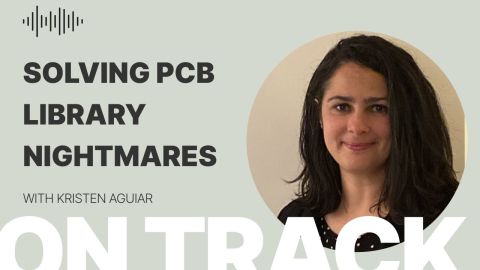Mike Konrad on Design for Reliability
Mike Konrad’s passion is educating people about cleaning their boards at assembly. If you care about Design for Reliability (DfR), you’ll learn a lot from this podcast. Mike is President & CEO of Aqueous Technologies, which manufactures, sells, and supports machines that clean circuit boards after reflow, with the goal to remove ionic residue and eliminate the chance of electrochemical migration. He is also a fellow-podcaster; hosting a show called ‘Reliability Matters’. Hear how Mike got his start in the industry and founded Aqueous Technologies and more.
Listen to the Podcast:
Download this episode (right click and save)
Watch the video:

Show Highlights:
- Cleaning is optional for some and mandatory for others - it adds reliability.
- Q: “What does ‘cleaning’ mean with regard to the way a board comes into an assembly house?” A: “Every board has a tolerance for residue, unique to its purpose and design. This means it’s virtually impossible to predict what level of contamination each board will have.”
- We tell our customers that in controlled conditions, a board may have a substantial tolerance for contamination. However, you should never assume that your board starts at zero, no matter how much care goes into the fabrication or assembly process.
- The implication of dirty boards is mostly ECM (electrochemical migration failures) which manifests in one of three ways: dendritic growth, parasitic leakage, and CAF or CAFF.
- Dendritic growth is where metal crystals on a board grow between conductors, anodes and cathodes, creating shorts and causing the board to lose conductivity. Dendritic growth in a guided missile, for instance, could have disastrous implications.
- Parasitic leakage is a rise in conductivity and a loss in resistivity, creating a current path, but not enough to cause a dead short
- CAF (Conductive Anodic Filaments) or CAFF Conductive Anodic Filament Failure, is partially caused by micro-cracks or dry weave between the layers of a board, where the plating solution from the vias and through-holes leach into the cracks
- When considering the application, it’s essential to determine the cost of failure, e.g., a pacemaker...
- When a board catches fire, it’s pretty clear what will happen to the product housing the board.
- The Montreal Protocol was a treaty that got rid of chemicals used to clean circuit boards in 1989. Vapors from solvents and chlorine molecules were damaging the ozone layer and it was ratified by every member nation of the UN, leading to the emergence of low-residue flux (sometimes erroneously called “no-clean flux”).
- Flux is mandatory when soldering to avoid oxidization. Some assemblers turned to more environmentally-friendly cleaning products that weren’t as effective, and the rest got rid of the process.
- Circuit boards have become denser and smaller, and miniaturization is causing more problems with the no-clean protocol.
- Don’t call it no-clean flux—low-residue flux is much more accurate. 55% of our customers who are running no-clean are cleaning. No-clean doesn’t mean “don’t clean”. Instead, don’t clean what doesn’t require it, but do clean what needs cleaning; it’s as simple as that.
- Mike relates a very telling litigation case in which an OEM couldn’t deliver the goods to its contract manufacturer (due to not fully cleaning contaminants from its boards) and tells us how litigation could have been avoided.
- IPC standards regarding cleanliness have recently been updated.
- What should designers be demanding in the form of cleanliness? What is the cost of failure, the criticality of the product and its climatic environment? These aspects must be included in the specifications.
- There are third-party companies that will look at your design file and create algorithms to determine its propensity for failure due to residues. It all boils down to clean boards!
Trade In Your Outdated PCB Design Tool & Unlock Savings on Altium Designer today!
Related Resources
Thank you, you are now subscribed to updates.









